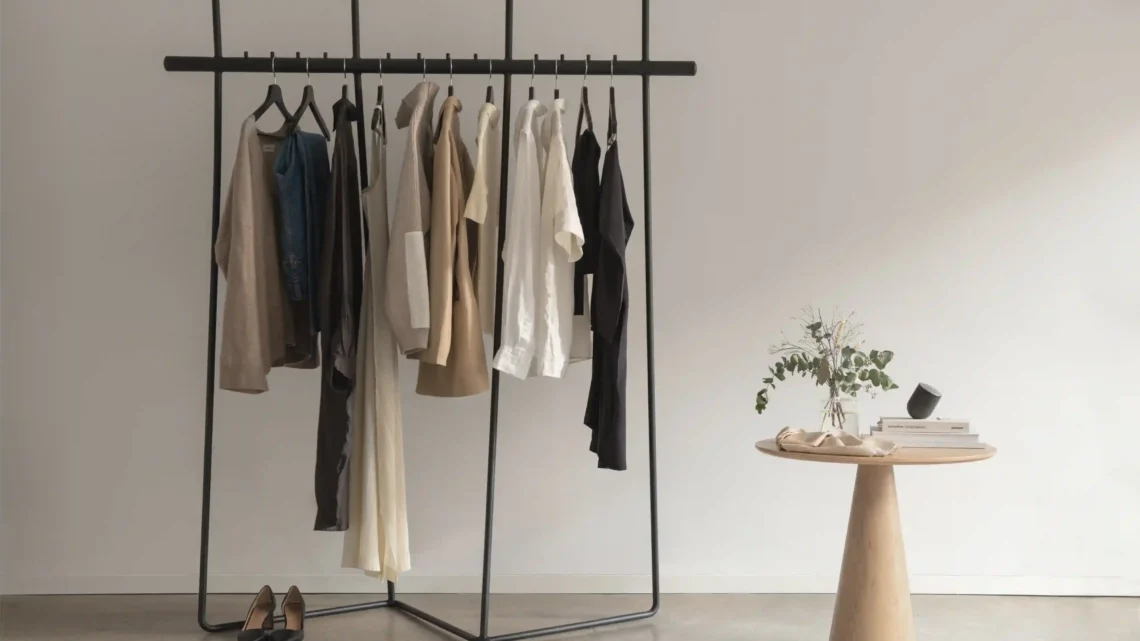
The Ultimate Guide to Building a Sustainable Wardrobe in 2025
In 2025, fashion is undergoing a transformative shift. As awareness of environmental impact and ethical production grows, building a sustainable wardrobe has become a priority for conscious consumers.
A sustainable wardrobe isn’t just about trendy pieces; it’s about curating clothing that aligns with eco-friendly values, longevity, and personal style.
Trending Now!!:
This guide will walk you through creating a wardrobe that’s both stylish and environmentally responsible, ensuring you look good while doing good.
Why Choose a Sustainable Wardrobe?
The fashion industry is one of the largest contributors to global pollution, accounting for roughly 10% of carbon emissions and significant water waste.
Fast fashion, with its low-cost, trend-driven pieces, often relies on exploitative labour and non-durable materials. By embracing sustainable fashion, you reduce your environmental footprint, support ethical brands, and invest in high-quality clothing that lasts.
In 2025, eco-conscious consumers are prioritizing versatile, timeless pieces over fleeting trends, making sustainability a cornerstone of modern style.
Step 1: Assess Your Current Wardrobe
Before diving into sustainable clothing, take stock of what you already own. A capsule wardrobe—a curated collection of versatile, high-quality pieces—forms the foundation of sustainable fashion. Start by decluttering:
- Keep Timeless Staples: Identify classic items like a well-fitted blazer, neutral-colored tops, or durable denim that can be styled in multiple ways.
- Repair or Upcycle: Mend damaged pieces or repurpose them into new designs. For example, turn an old shirt into a chic tote bag.
- Donate or Recycle: Responsibly dispose of items you no longer need by donating to thrift stores or using textile recycling programs.
This process helps you understand your style preferences and prevents impulsive purchases, a key principle of eco-friendly fashion.
Step 2: Prioritize Quality Over Quantity
When building a sustainable wardrobe, focus on quality materials and craftsmanship. Look for clothing made from eco-friendly fabrics like organic cotton, Tencel, hemp, or recycled polyester.
These materials are durable, biodegradable, or made with a lower environmental impact. In 2025, brands are increasingly transparent about their supply chains, so check for certifications like GOTS (Global Organic Textile Standard) or Fair Trade to ensure ethical production.
Invest in versatile pieces that transcend seasons, such as a tailored trench coat, a classic white shirt, or a pair of well-made boots. While these items may have a higher upfront cost, their longevity makes them cost-effective over time.
Search for brands that emphasize slow fashion, which prioritizes durability and ethical labor practices over mass production.
Step 3: Shop Secondhand and Vintage
Thrifting and vintage shopping are cornerstones of sustainable fashion. In 2025, secondhand platforms like Depop, Poshmark, and local thrift stores are thriving, offering unique pieces at affordable prices.
Buying pre-loved clothing reduces demand for new production and keeps garments out of landfills. Vintage shops also provide one-of-a-kind items that add character to your wardrobe.
When shopping secondhand, focus on fit and fabric. Check labels for natural or sustainable materials, and ensure the piece aligns with your capsule wardrobe goals.
- Pro tip: Use apps to filter for specific sizes or brands to streamline your search.
Step 4: Support Ethical and Sustainable Brands
The rise of eco-conscious fashion has led to an explosion of brands prioritizing sustainability. In 2025, companies like Patagonia, Everlane, and Reformation continue to lead with transparent practices and eco-friendly materials.
Newer brands are also emerging, offering innovative solutions like biodegradable sneakers or modular clothing that adapts to multiple styles.
When choosing brands, research their sustainability commitments. Look for those that use renewable energy, minimize water usage, or offer take-back programs for recycling old garments. Supporting small, local designers can also reduce the carbon footprint associated with global shipping.
Step 5: Master the Art of Care and Maintenance
A sustainable wardrobe thrives on longevity, and proper care is key. Extend the life of your clothing with these tips:
- Wash Smart: Use cold water and eco-friendly detergents to reduce energy consumption and prevent fabric degradation.
- Air Dry: Skip the dryer to save energy and maintain fabric integrity.
- Repair Promptly: Fix small tears or loose buttons before they become major issues.
- Store Properly: Use wooden hangers for structured pieces and fold knits to prevent stretching.
By treating your clothing with care, you maximize its lifespan, reducing the need for frequent replacements.
Step 6: Embrace Minimalism and Versatility
A sustainable wardrobe in 2025 is rooted in minimalism. Aim for a curated collection of 30–50 pieces that can be mixed and matched for endless outfits.
Focus on neutral colors and classic silhouettes that suit multiple occasions. For example, a well-cut black dress can transition from office wear to evening elegance with the right accessories.
Experiment with styling to keep your wardrobe fresh. Layering, tucking, or pairing with statement accessories can transform a simple outfit. By maximizing versatility, you reduce the urge to buy new pieces, aligning with the principles of slow fashion.
Step 7: Stay Informed About Sustainable Fashion Trends
Sustainability doesn’t mean sacrificing style. In 2025, eco-friendly fashion trends include modular clothing, upcycled designs, and bold monochromatic looks made from sustainable materials.
Follow fashion blogs, social media posts, or influencers who focus on ethical fashion for inspiration. Platforms are also great for discovering new sustainable brands or secondhand finds through community recommendations.
Stay updated on innovations like lab-grown leather or 3D-printed clothing, which are gaining traction as low-impact alternatives. By staying informed, you can make educated choices that align with both your style and values.
Step 8: Advocate for Change
Building a sustainable wardrobe is a personal commitment, but it’s also part of a larger movement. Share your journey on platforms like X to inspire others.
Advocate for policies that hold the fashion industry accountable, such as stricter regulations on waste or labour practices. Supporting brands that align with your values sends a powerful message to the industry.
Final Thoughts
Creating a sustainable wardrobe in 2025 is about making intentional choices that benefit both you and the planet.
By prioritizing quality, shopping secondhand, supporting ethical brands, and caring for your clothes, you can build a stylish, eco-friendly wardrobe that stands the test of time.
Start small, stay curious, and embrace the journey toward a more sustainable future—one outfit at a time.


